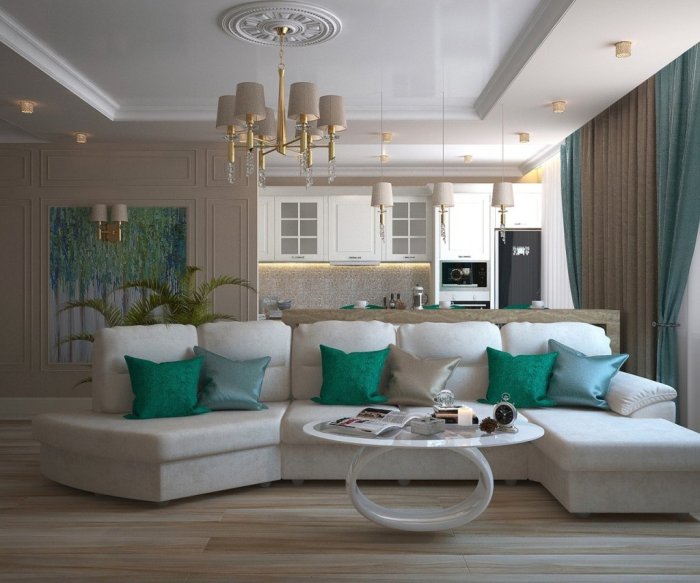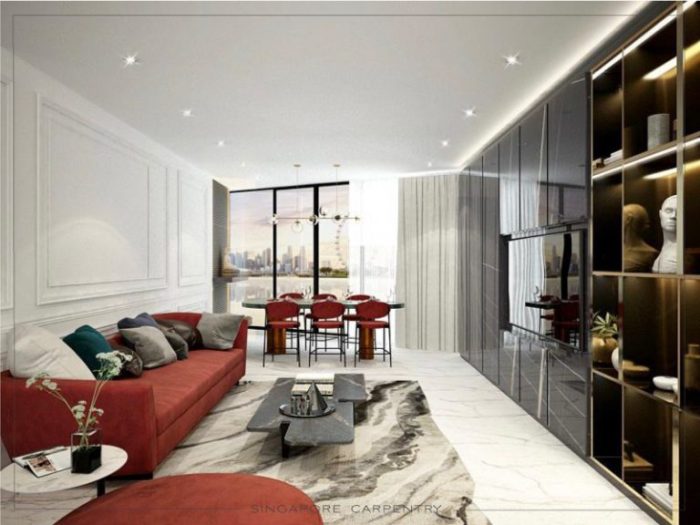Diving into Interior Design Tips to Instantly Elevate Any Room, this introduction immerses readers in a captivating narrative, with engaging and thought-provoking language that sets the stage for an enlightening discussion.
The second paragraph provides descriptive and informative content about the topic, setting the tone for a comprehensive exploration of interior design tips.
Introduction to Interior Design Tips

Interior design is the art and science of enhancing the interior of a space to achieve a more aesthetically pleasing and functional environment. It involves designing and arranging furniture, color schemes, decor, and overall layout to create a cohesive and harmonious space.
Well-thought-out interior design is crucial for any room as it can significantly impact the mood, atmosphere, and functionality of the space. A carefully designed interior can make a room feel more inviting, comfortable, and visually appealing, while also improving the flow and usability of the space.
The Impact of Good Interior Design
Good interior design can transform the overall ambiance of a room, creating a sense of harmony and balance. It can enhance the natural light, maximize space, and highlight the architectural features of the room. Additionally, a well-designed interior can reflect the personality and style of the occupants, making the space feel more personalized and unique.
Color Scheme Selection
Choosing the right color scheme for a room can significantly impact the overall ambiance and feel of the space. Colors have the power to evoke emotions, create a sense of harmony, and even influence the perception of room size.When selecting a color scheme, consider the following factors:
The purpose of the room
Different colors can convey different moods and atmospheres. For example, warm tones like reds and oranges can create a cozy and intimate feel in a living room, while cool tones like blues and greens can promote relaxation in a bedroom.
Natural light
The amount of natural light in a room can affect how colors appear. Rooms with ample sunlight may benefit from lighter shades to enhance brightness, while darker colors can add depth and drama to spaces with limited natural light.
Personal preference
Ultimately, choose colors that resonate with your personal style and preferences. Don't be afraid to experiment with bold hues or unexpected color combinations to make a unique statement.
Examples of Color Combinations
When it comes to elevating a space, certain color combinations can instantly transform the look and feel of a room. Here are some popular options:
- White and Navy: A classic combination that exudes sophistication and elegance. White walls paired with navy accents create a timeless and polished look.
- Blush Pink and Grey: This soft and delicate pairing adds a touch of romance and serenity to any room. Blush pink walls complemented by grey furniture create a calming and chic atmosphere.
- Teal and Gold: For a luxurious and vibrant feel, teal and gold make a striking duo. Teal walls accented with gold accessories bring a sense of opulence and glamour to the space.
Remember, the key is to find a color scheme that not only enhances the aesthetic appeal of the room but also aligns with the desired mood and functionality of the space. Experiment with different colors and combinations to discover what works best for your unique style and preferences.
Furniture Arrangement and Placement
When it comes to interior design, furniture arrangement and placement play a crucial role in optimizing space and enhancing the flow of a room. Strategic placement of furniture can transform a space and make it more functional and visually appealing.
Importance of Focal Points
Creating focal points in a room is essential as they draw the eye and create a sense of balance and harmony. Whether it's a fireplace, a piece of artwork, or a statement piece of furniture, focal points help anchor the room and guide the overall design scheme.
- Position key furniture pieces around the focal point to highlight its importance and create a cohesive look.
- Ensure there is enough space around the focal point to allow it to stand out and make a statement.
Selecting the Right Furniture Pieces
Choosing the right furniture pieces for a specific room size is essential to ensure that the space feels balanced and functional. Consider the following tips when selecting furniture:
- Measure the room dimensions carefully to determine the appropriate size of furniture that will fit well without overpowering the space.
- Opt for multi-functional furniture pieces like storage ottomans or nesting tables to maximize space in smaller rooms.
- Consider the traffic flow in the room and arrange furniture in a way that allows for easy movement and access to different areas.
Lighting Techniques

Lighting plays a crucial role in setting the ambiance of a room, creating different moods, and highlighting key features. Understanding various lighting techniques can help you achieve the desired atmosphere in your space.
Ambient Lighting
Ambient lighting provides overall illumination to a room, ensuring a comfortable level of brightness. This can be achieved through ceiling-mounted fixtures, chandeliers, or wall sconces. It helps create a warm and inviting atmosphere.
Task Lighting
Task lighting is focused on specific areas where activities such as reading, cooking, or working take place. Desk lamps, under-cabinet lights, or pendant lights are common examples. Task lighting is essential for functionality and efficiency.
Accent Lighting
Accent lighting is used to highlight architectural features, artwork, or decorative elements in a room. This can be achieved with track lighting, wall-mounted fixtures, or recessed lights. Accent lighting adds depth and visual interest to a space.
Natural Light Optimization
Natural light has a significant impact on the overall feel of a room. To maximize natural light, consider using sheer curtains, mirrors to reflect light, and strategically placing furniture away from windows to allow light to penetrate deeper into the room.
Natural light creates a sense of openness and vitality.
Textures and Patterns
When it comes to interior design, textures and patterns play a crucial role in adding depth, visual interest, and personality to a room. Incorporating a variety of textures and patterns can help create a more dynamic and visually appealing space.
Importance of Textures and Patterns
Textures and patterns can transform a bland room into a cozy and inviting space. They add a tactile element that can make a room feel more warm and welcoming. By mixing different textures and patterns, you can create a layered look that adds complexity and sophistication to your design.
Examples of Textures and Patterns
- Adding a chunky knit throw blanket to a sleek leather sofa for contrast.
- Using a mix of geometric patterns in throw pillows to add visual interest to a solid-colored couch.
- Incorporating a shaggy rug in a room with smooth surfaces for a touch of coziness.
Tips for Mixing and Matching
- Start with a neutral base and layer on textures and patterns for a cohesive look.
- Consider the scale of the patterns - mix large-scale patterns with smaller ones for balance.
- Stick to a consistent color palette when mixing textures and patterns to avoid a chaotic look.
Final Thoughts
In conclusion, this discussion has shed light on various aspects of interior design tips that can truly transform any room. By implementing these strategies, you can elevate the ambiance and aesthetics of your living spaces effortlessly.
FAQ Compilation
What is the importance of choosing the right color scheme?
Choosing the right color scheme can instantly transform a room by setting the mood, creating visual interest, and enhancing the overall aesthetics.
How can natural light be maximized in a room?
To maximize natural light in a room, use light-colored curtains, strategically place mirrors to reflect light, and keep windows unobstructed.
Why is furniture arrangement crucial in interior design?
Proper furniture arrangement can optimize space, improve flow, and create a harmonious layout that enhances the functionality and visual appeal of a room.
How do textures and patterns contribute to interior design?
Textures and patterns add depth, visual interest, and a tactile element to a room, making it more dynamic and engaging.







